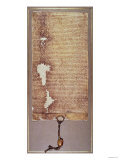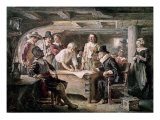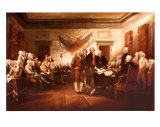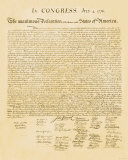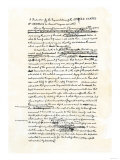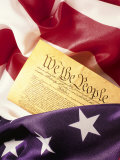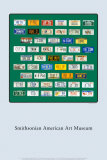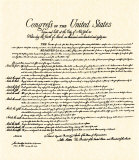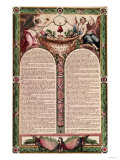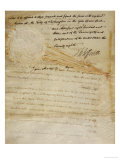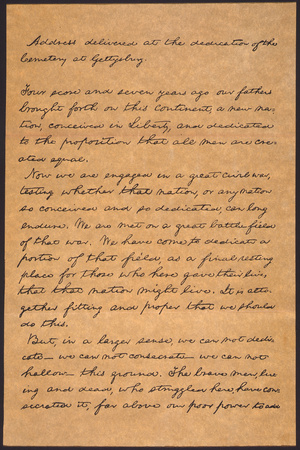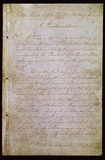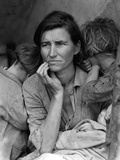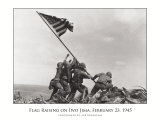|
|
|
|
|
|
|
|
|
|
|
|
BOOKS ABOUT FAMOUS DOCUMENTS
|
|
|
|
|
|
|
|
|
|
|
|
|
|
|
|
 |
|
|
|
Famous Documents & Historic Moments History Posters
for the social studies teacher, home schoolers, theme decor.
|
history > HISTORIC DOCUMENTS / PHOTOS < social studies
|
|
Selection of educational posters and art prints of famous documents such as the Magna Carta, the Mayflower Compact, the Declaration of Independence, the U.S. Constitution, and the Bill of Rights; and images such as Washington Crossing the Delaware, Migrant Mother, and Raising the Flag at Iwo Jima.
• “In 1776, the Americans laid before Europe that noble Declaration, which ought to be hung up in the nursery of every king, and blazoned on the porch of every royal palace.” ~ Henry Thomas Buckle
|
|
|
The Magna Carta (Latin for “Great Charter”) of Liberties, originally issued in 6-15-1215, is considered one of the most important legal documents in the history of democracy and was the most significant early influence leading to the rule of constitutional law through the United States Constitution and Bill of Rights.
• England posters
|
|
|
|
|
|
|
The British signed a treaty with the Six Nations of the Mohawk, Oneida, Onondaga, Cayuga, Seneca and Tuscarora, known collectively as the Iroquois Confederation, in 1769.
• Native Americans posters
|
|
|
|
Declaration of Independence
American Revolution artist and soldier John Trumbull (1756 – 1843) provided General Washington with maps of enemy positions. His painting, “The Declaration of Independence,” pays homage to the event, and immortalized the nation's forefathers.
|
|
|
|
On July 2, 1776, the Second Continental Congress, meeting in Philadelphia in the Pennsylvania State House (now Independence Hall), approved the Declaration of Independence, severing the colonies' ties to the British Crown. The Declaration was made public on July 4.
A committee of John Adams, Benjamin Franklin, Roger Sherman, and Robert R. Livingston, headed by Thomas Jefferson, drafted the declaration.
• Declaration of Independence text, Library of Congress
• Signers of Declaration of Independence by state
|
|
|
|
The Constitution
The members of the Constitutional Convention signed the United States Constitution on September 17, 1787 in Philadelphia, Pennsylvania. The Constitutional Convention convened in response to dissatisfaction with the Articles of Confederation and the need for a strong centralized government. After four months of secret debate and many compromises, the proposed Constitution was submitted to the states for approval.
The Preamble: “We the People of the United States, in Order to form a more perfect Union, establish Justice, insure domestic Tranquility, provide for the common defense, promote the general Welfare, and secure the Blessings of Liberty to ourselves and our Prosperity, do ordain and establish this Constitution for the United States of America.”
Although the vote was close in some states, the Constitution was eventually ratified and the new Federal government came into existence in 1789. The Constitution established the U.S. government as it exists today.
• more American Revolution Era posters
|
|
|
|
Bill of Rights (Document)
On June 8, 1789, James Madison introduced his proposed amendments to the Constitution, which would eventually become known as the Bill of Rights. The Bill of Rights are the ten amendments to the U.S. Constitution and contained guarantees of essential rights and liberties omitted in the crafting of the original document.
• more Bill of Rights posters
|
|
|
|
German artist Emanuel Gottlieb Leutze expressed the feelings of patriotism and courage in his 1851 painting depicting George Washington leading American revolutionary troops across the Delaware River. The dawn attack in winter defeated the surprised English and Hessian troops in Trenton (NJ), the day after Christmas in 1776.
|
|
|
|
|
|
|
Though not explicitly given constitutional permission to acquire territory President Thomas Jefferson proceeded with the Louisiana Purchase in the face of domestic opposition because he was uneasy about France and Spain being able to block American traders' access to the port of New Orleans (remember that Jefferson was ambassador to France in during the American Revolution and would have been well aware of French intentions). The purchase price was $15 million or about 3¢ per acre; France finanaced the purchase and earned another $8 million in interest.
The Louisiana Purchase territory consisted of approximately 530 million acres claimed for France by de LaSalle in 1682. The territory contained all of present-day Arkansas, Missouri, Iowa, Oklahoma, Kansas, Nebraska, Minnesota south of Mississippi River, much of North Dakota, nearly all of South Dakota, northeastern New Mexico, northern Texas, the portions of Montana, Wyoming, and Colorado east of the Continental Divide, and Louisiana on both sides of the Mississippi River, including the city of New Orleans. The Louisiana Purchase represents around 23% of the area of the modern United States.
Between 1804 and 1806 an expedition of discovery, headed by Lewis & Clark, followed Jefferson's instructions – “The object of your mission is to explore the Missouri river, and such principal stream of it as by its course and communication with the waters of the Pacific Ocean whether the Columbia, Oregon, Colorado or any other river may offer the most direct and practicable water communication across this continent for the purposes of commerce." letter dated June 20, 1803
• Jefferson's Great Gamble: The Remarkable Story of Jefferson, Napoleon, and the Men Behind the Louisiana Purchase
|
|
|
|
Fur Traders Descending the Missouri by George Caleb Bingham is one of the most recognized American paintings. The book, Across the Wide Missouri, is a history of the fur trade in the American West during its peak in the 1830s. The trapping of beaver and other animals eventually caused conflict between the trappers and the Indian tribes of the Upper Missouri River Basin.
• more Missouri posters
|
|
|
|
The Gettysburg Address, a short dedicatory remarks by U.S. President Abraham Lincoln, is one of the best-known speeches in American history. There are five known manuscripts of the Gettysburg Address which differ in a number of details and from contemporary newspaper reprints of the speech.
The Address was delivered by Lincoln during the American Civil War, on the afternoon of Thursday, November 19, 1863, at the dedication of the Soldiers' National Cemetery in Gettysburg, Pennsylvania, four and a half months after the Union armies defeated those of the Confederacy at the Battle of Gettysburg.
“Four score and seven years ago our fathers brought forth on this continent a new nation, conceived in liberty, and dedicated to the proposition that all men are created equal.
Now we are engaged in a great civil war, testing whether that nation, or any nation so conceived and so dedicated, can long endure. We are met on a great battlefield of that war. We have come to dedicate a portion of that field, as a final resting place for those who here gave their lives that that nation might live. It is altogether fitting and proper that we should do this.
But, in a larger sense, we can not dedicate, we can not consecrate, we can not hallow this ground. The brave men, living and dead, who struggled here, have consecrated it, far above our poor power to add or detract. The world will little note, nor long remember what we say here, but it can never forget what they did here. It is for us the living, rather, to be dedicated here to the unfinished work which they who fought here have thus far so nobly advanced. It is rather for us to be here dedicated to the great task remaining before us — that from these honored dead we take increased devotion to that cause for which they gave the last full measure of devotion — that we here highly resolve that these dead shall not have died in vain — that this nation, under God, shall have a new birth of freedom — and that government of the people, by the people, for the people, shall not perish from the earth.”
|
|
|
|
The Emancipation Proclamation
“I do order and declare that all persons held as slaves within designated States, and parts of States, are, and henceforward shall be free.”
In the middle of the Civil War, President Abraham Lincoln signed the Emancipation Proclamation, declaring that all the slaves in the territories that were fighting against the Union "are, and henceforward shall be free." With this document, President Lincoln made it clear that the purpose of the Civil War was not only to preserve the Union, it was also to free the slaves.
Although Lincoln had always opposed slavery, the Civil War was not, in the beginning a fight to end it. Southern states had seceded, or separated, from the United States because they were worried that the U. S. government would try to limit slavery. Lincoln's primary goal was to hold the country together. He worried that if he tried to end slavery, slave states such as Kentucky and Missouri, which bordered the South but remained part of the Union, would join the Confederacy. But eventually, Lincoln realized that the United States could not survive if some of its people were not free. In addition, he needed to gain the support of countries such as France and England. These countries relied on the South to supply them with cotton, but they were also very opposed to slavery, if the Union's aim was to free the slaves, they would side with the North.
On January 1, 1864, Lincoln issued the Emancipation Proclamation. In it, he said freeing the slaves was 'an act of justice.' But though the proclamation sent an important message against slavery, it did not free a single slave on the day it was signed. The proclamation only freed slaves in the states that were not under the control of the Union. Slaves in the loyal border states were not freed, and Lincoln had no authority to free the slaves in areas controlled by the Confederacy. But as the Union army advanced and took control of new Confederate territories, slaves were freed. The proclamation also welcomed African Americans into the Union's armed forces. By the end of the war nearly 200,000 former slaves and free black had fought for the Union.
Abraham Lincoln later said that the Emancipation Proclamation was "the central act of my administration, and the greatest event of the 19th century." Although it was mostly symbolic on the day it was signed, the proclamation sent a message that the United States was a free nation where slavery would not be tolerated. Henry Ward Beecher, a leading abolitionist, affirmed “The Proclamation may not free a single slave, but it gives Liberty a moral recognition.” The work that began with the Emancipation Proclamation was completed on December 18, 1863, with the ratification of the 13th Amendment ot the Constitution, banning slavery in the United States.
• Civil Rights posters
|
|
|
|
|
|
|
|
|
previous page | top
|
|
I have searched the web for visual, text, and manipulative curriculum support materials - teaching posters, art prints, maps, charts, calendars, books and educational toys featuring famous people, places and events - to help teachers optimize their valuable time and budget.
Browsing the subject areas at NetPosterWorks.com is a learning experience where educators can plan context rich environments while comparing prices, special discounts, framing options and shipping from educational resources.
Thank you for starting your search for inspirational, motivational, and educational posters and learning materials at NetPosterWorks.com. If you need help please contact us.
|
|
|












